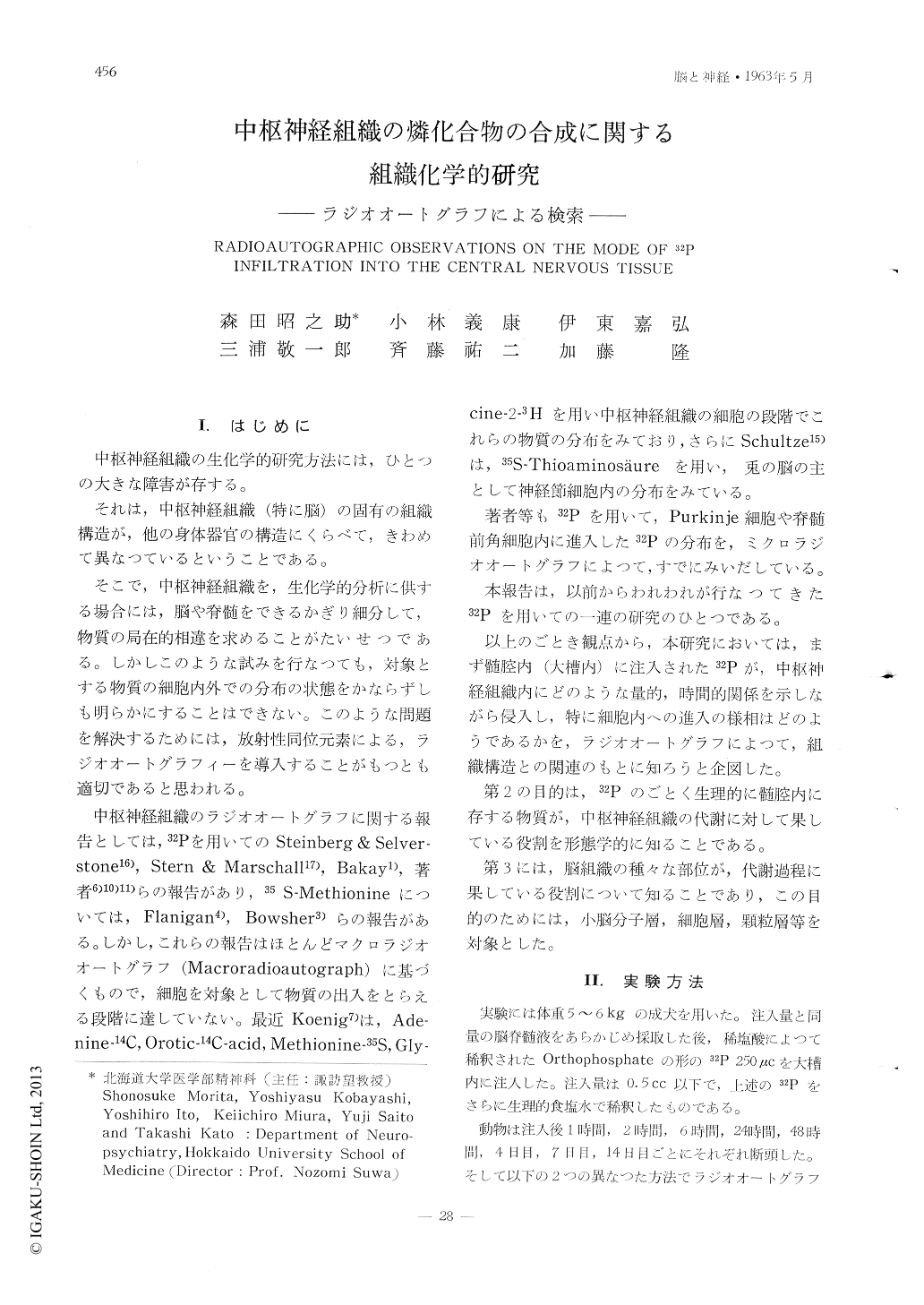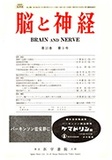Japanese
English
- 有料閲覧
- Abstract 文献概要
- 1ページ目 Look Inside
I.はじめに
中枢神経組織の生化学的研究方法には,ひとつの大きな障害が存する。
それは,中枢神経組織(特に脳)の固有の組織構造が,他の身体器官の構造にくらべて,きわめて異なつているということである。
The authors made radioautographic obser-vations on the mode of 32P infiltration into the central nervous tissue after being injec-ted into the cisterna magna of dogs, and also on the synthetizing process of 32P into orga-nic compounds in the nerve cells.
Microradioautographs prepared under frozen conditions without fixation and microradio-autographs prepared by ordinary histological tissue-fixation were investigated and com-pared with each other.
The main results and coniclusions thus ob-tained are as follows:
1) Two stages appear to exist in the process of incorporation of 32P into the tissue; at first stage the phosphate in the cerebrospinal fluid infiltrates into the central nervous tissue by action of diffusion, and secondly, the phos-phate is incorporated into various organic compounds in response to the metabolic processes of the central nervous tissue.
2) Though in early stage after the injec-tion 32P tends to be distributed not in karyo-plasma but in cytoplasma, 32P proves later to be distributed gradually within the whole cell including both cytoplasma and karyoplasma. Such chronological changes in 32P-distribution within the cells corresponds to that in distri-bution of protein, RNA, DNA and lipid inside of the cells and also to turnover rate of 32P into these fractions.
3) In the metabolism of phosphorus com-pounds, the parvicellular molecular layer of the cerebellum seems to relate closely to rapid chemical changes such as those achieved by acid soluble faction, and the other layers of the cerbellum seem to have close con-nection with such relatively slow chauges as seen in protein, nucleic acid and lipid.

Copyright © 1963, Igaku-Shoin Ltd. All rights reserved.


